World
Surviving poverty in the Philippines
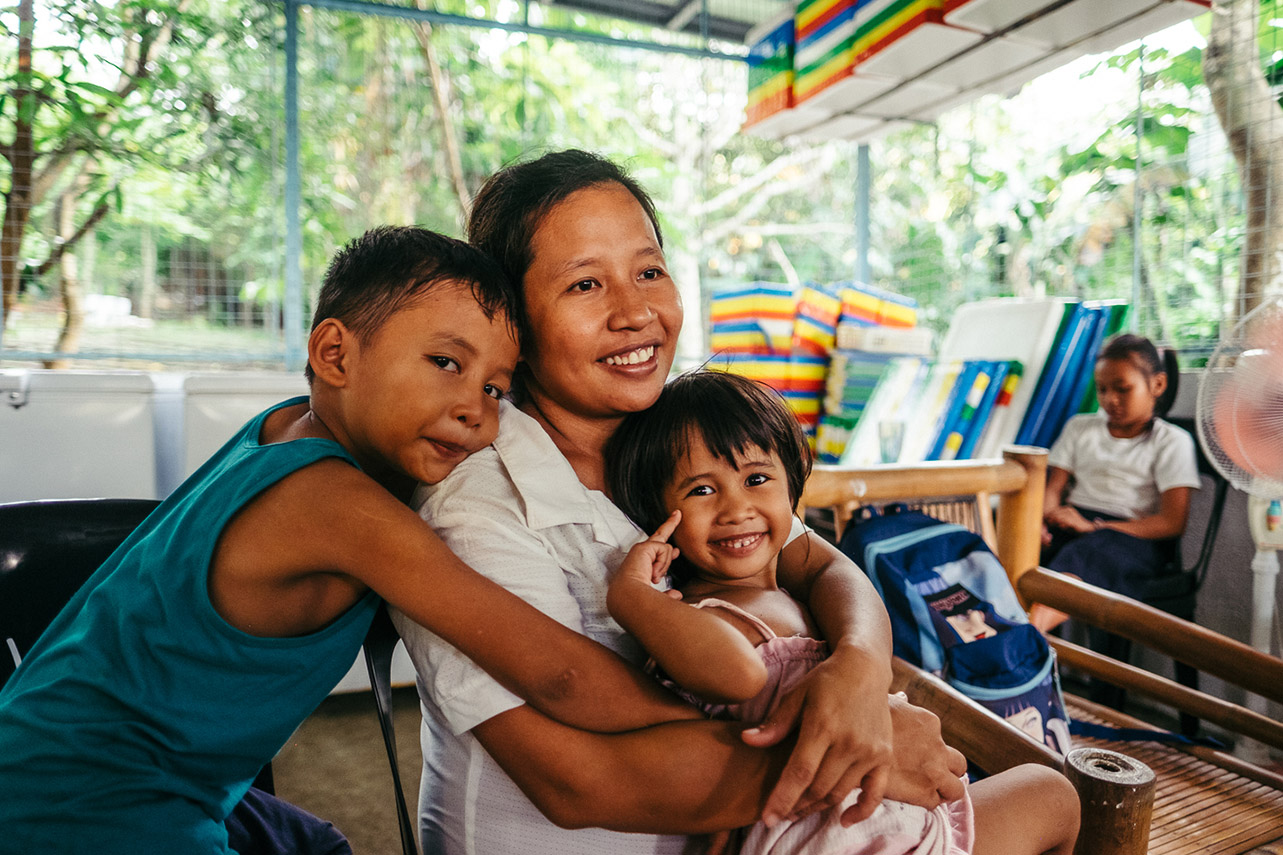
caption
Social entrepreneurship means a chance to leave the slums behind
Anielyn Dabuan smiles as she pours purified water into a pan on the concrete floor. In fact, Dabuan is always smiling. She’s filling ice moulds to be floated in sub-zero water until they freeze. In half an hour, she’ll collect the ice. This is how she makes her living — making ice and popsicles, ‘ice lollies’, to sell.
• • •
Dabuan lives and works on a farm in Angat in Bulacan province, a couple of hours northeast of Manila, the Philippines’ capital. It’s mid-October and 23? C. The air is heavy and hot with an imminent typhoon. The ice candies need to be eaten quickly or they’ll melt.
The farm she lives on is special for the Philippines. It’s a country where many families have at least a small plot of land where they usually plant one crop — rice.
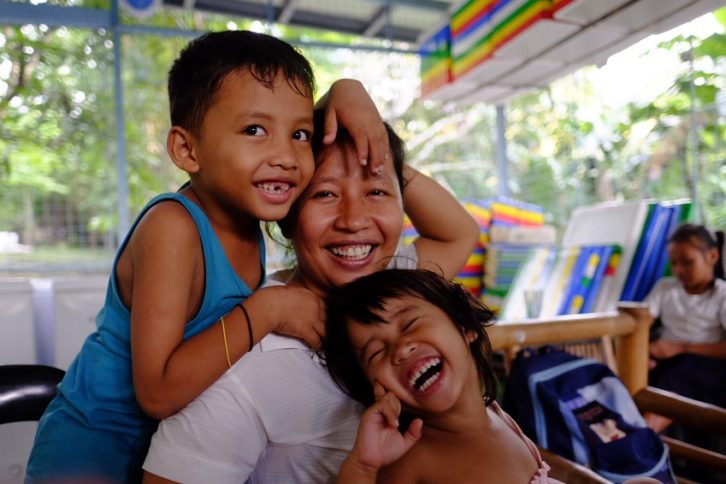
caption
Anielyn Dabuan sits in her ice candy shop with three of her children.The farm Dabuan lives on is called GK Enchanted Farm. It’s owned by an NGO called Gawad Kalinga. It’s huge, a roaming 34 hectares worth of farmland and community housing. Fifty families live there. On the fertile land there is rice, banana trees, lemongrass, herbs and more. Every once in awhile you’ll stumble across a paddock housing turkeys, ducks or goats.
Millions in poverty
It’s nickname is ‘The Pearl of the Orient Sea’, but the archipelago nation of more than 7,000 islands is known equally for its slums as for its limestone cliffs and sunset beaches.
More than 100 million people live in the Philippines. About 25 million of them live below the poverty line and four million live in Manila’s slums. Before coming to the farm, Dabuan lived in Metro Manila, squatting or renting.
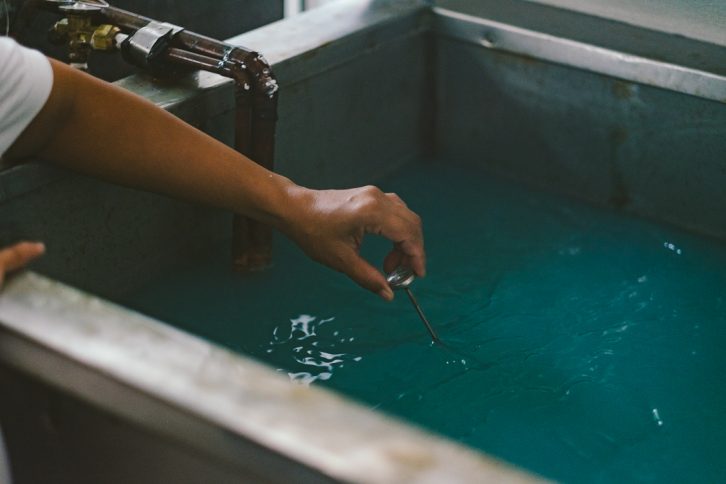
caption
The -20?C gyrating water in the machine Dabuan is working with freezes her ice moulds in 30 minutes.Dabuan came here with her family nearly nine years ago as part of a state-sponsored farming education program for welfare beneficiaries. She volunteered to take the education program through Couples for Christ, a Christian organization in her neighbourhood.
When she first came here, the land was nothing. “Just some dead trees,” she says. She and her husband were given a 10 square meter garden with tomatoes, leeks and kalamansi (Filipino lemons).
“That’s how we survived,” she says.
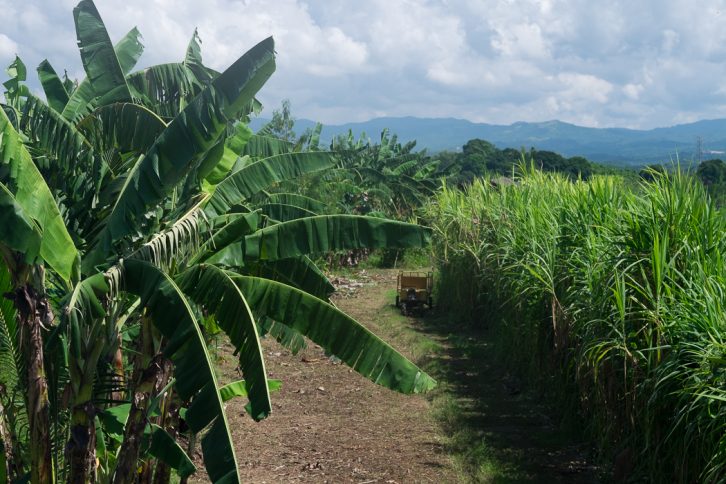
caption
Multi-crop planting, like these banana trees (left) and sugarcane (right) mean fields more resistant to typhoon destruction.Multi-crop planting, like these banana trees (left) and sugarcane (right) mean fields more resistant to typhoon destruction.
When Dabuan and her husband finished the 13-week farming program, they were given an option: They could put in 1,000 hours of community labour, or ‘sweat equity’, and in exchange receive their own house — something they never had.
Silicon Valley in the Filipino jungle
In the years since Dabuan came here, entrepreneurs from North America, Europe and Asia have invested in the barren land. Shell, Hyundai and Microsoft are among their strategic partners. Where there were dead trees now sits a prototype village for what social entrepreneurship might do for the millions of poor in the Philippines. It’s surreal, almost like Disneyland — a far cry from the foul slums of the capital.
Most of the locals who are living in the village lived in the area before Gawad Kalinga came, then there are people like Dabuan, who left the city seeking a better life.
“You’re a squatter. Then just like that, you’re a caretaker of the land,” she says, smiling.
All of her children get an education here. Dabuan is speaking in English. It’s the official second language in the Philippines, but many people living below the poverty line are never given a chance to learn it. Everyone on the farm is offered English classes. Walking down the main road, every non-Filipino is greeted by a confident swell of ‘good morning!’
House of sweat
Dabuan and her husband worked for over a year to to earn their house. They work they did was mostly helping out on the farm — working in the fields, preparing the land and doing whatever was needed. During that time, she commuted from Metro Manila to the farm by Jeepney (the local bus). She would often wait three hours or more for it to come and then the journey would be another couple of hours.
The road here wasn’t paved until 2011. Before then, if it rained she would carry her children to school through the washed-out roads.
She says the community here is what kept her coming back. “At lunch time we spread (our food) on banana leaves so it would become everyone’s food. If you don’t have food, you can join. It’s memorable things like that — even when we are so tired, we’re all together. When we go home we have a smile because of that.”
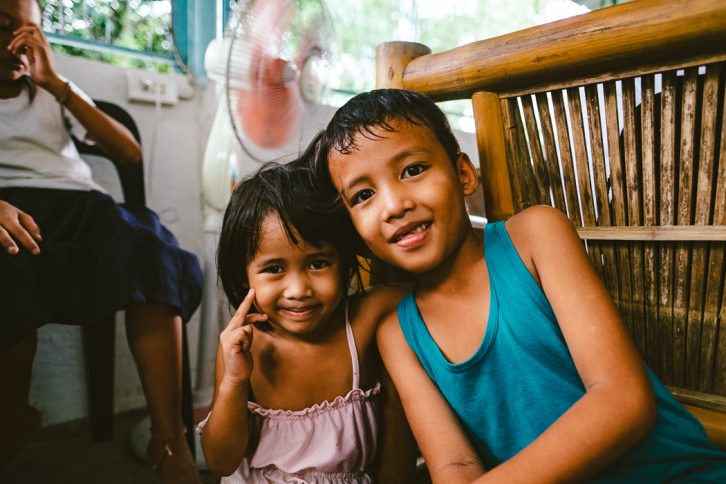
caption
Two of Dabuan’s children: Rutchel, 3, and Elor, 5The idea for the prototype farm started when the NGO realized its house-building program was not enough to lift people out of poverty. In the over 2,000 communities where they’ve built homes, the house recipients told them the houses were appreciated, but they still didn’t have any way to provide for their families.
Dabuan’s ice lolly venture, Palamigan Co. (meaning ‘Cooler Co.’ in English) is an example of one of the ventures the farm is supporting.
The ice machine Dabuan uses was donated a couple of years ago. This meant she didn’t need any capital for her startup business; she just had to ask the people who donated the freezer how to use it.
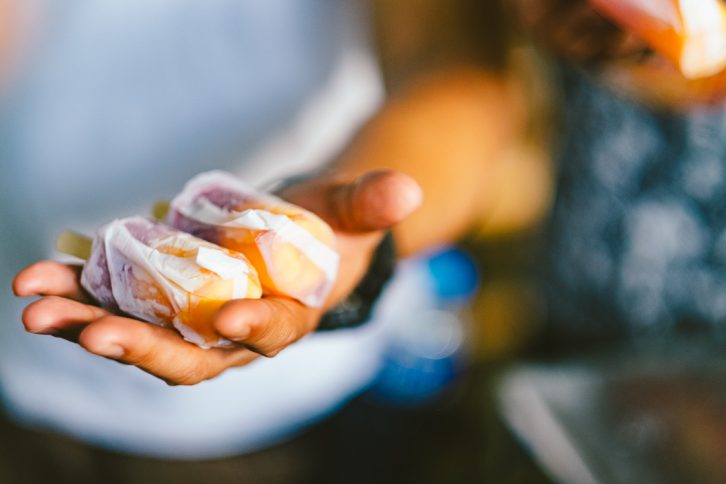
caption
Anielyn charges between 7 and 10 pesos per popsicle. That’s about 20 cents Canadian.She says some of the other people living on the farm were nervous about the sub-zero technology. “I wasn’t scared because I wanted a good job. I wanted knowledge.”
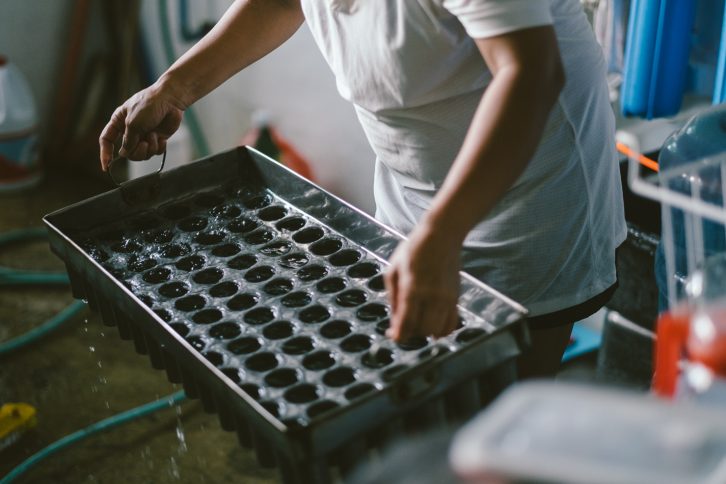
caption
Dabuan handles a tray of ice moulds filled with distilled water.On a good day, Dabuan fills orders of around 200 popsicles. She’s created business relationships with some local schools who buy from her. Each treat sells for 7-10 pesos, or around 20 cents Canadian, meaning on a good day she might make around $35. The poverty line is around 275 pesos per day, or $7.50 Canadian.
More entrepreneurs, more stories
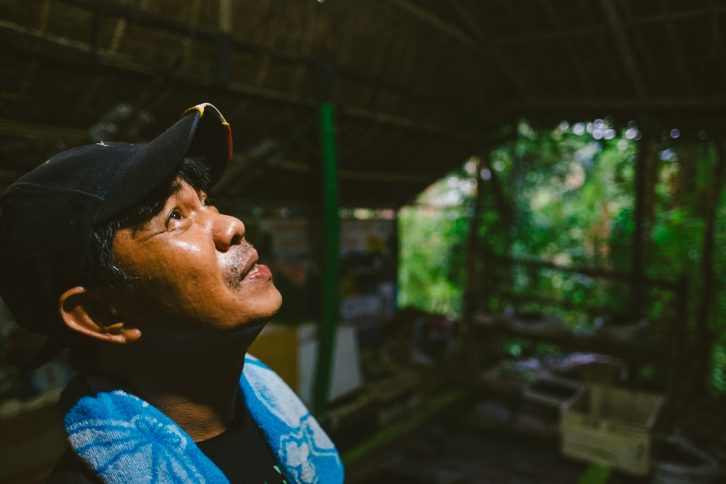
caption
Tito Jun uses African nightcrawler worms to create fertilized compost. Tito means ‘uncle’ and he insists everyone call him that.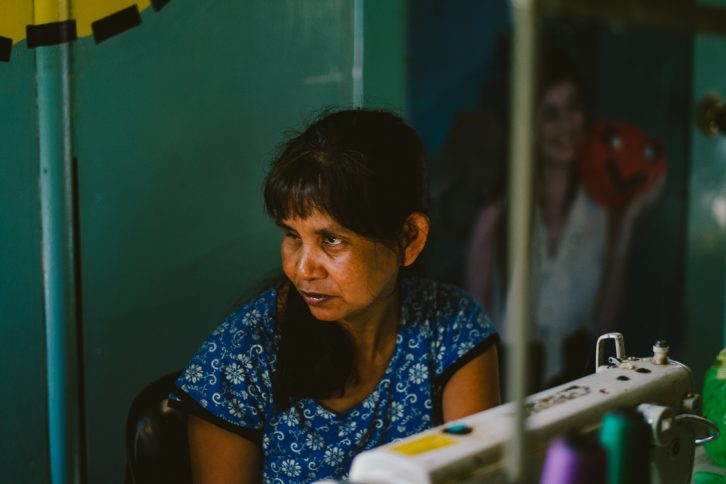
caption
Tita Fay is a founding member of a venture called Plush n’ Play. The vegetable-shaped toys encourage children to eat more vegetables. Like many women in Angat, she was left unemployed when the textile factories in the area suddenly closed.Gawad Kalinga keeps a 30 per cent stake in all of the companies created on the farm. Just like in Silicon Valley, there are more failures than successes, but the focus here is on social entrepreneurship — creating ventures that aren’t just profitable, but are good for the community.
Most of the ventures use what the farm provides. There’s a tea company that uses the lemongrass and sweet potatoes to make a cold tea drink. There’s a venture that sells duck burgers. Another makes salted eggs rubbed with turmeric. The ventures also provide money for community members who don’t have their own businesses but are beneficiaries who work for them.
Marie Cavosora from Calaboo uses milk from water buffalo to create dairy products like yogurt and butter. She was drawn to the farm after reading its manifesto, a creed displayed on the walls of one of the farm’s main meeting halls that invokes the spirit of national pride and helping the poor.
The second verse especially resonates with her. It reads, “God did not make a mistake in making me Filipino. I am honouring God’s plan for me as a Filipino by loving my country. I am joining the fight to end poverty, not just in words but more so in ACTION. I will not stand by idly as millions of my fellow Filipinos go hungry while I pursue my dreams and build by riches.”
Cavosora didn’t grow up poor. She went to university in Manila and then moved to North America, working for Pepsi in New York and Kraft in Canada. She also spent time living in San Francisco.
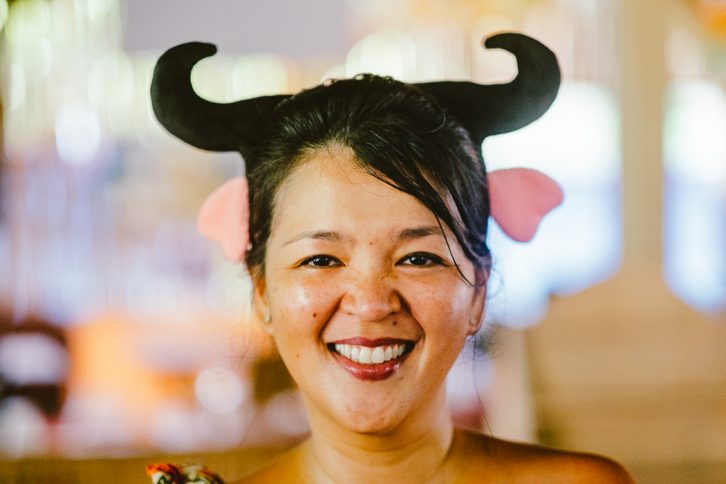
caption
Marie Cavosora went from a San Francisco apartment to living in a GK farm dormitory. She’s passionate about making Filipino products.“I went to Quebec. I went to Nepal. I did the whole ‘Eat, Pray, Love’ thing. Shaved my head, joined a punk band. I used to run a wellness centre. When I read, ‘It was not a mistake that I was born Filipino’, I knew that this is what I had to do. Where I had to be,” says Cavosora.
She mentors Dell, a community member and beneficiary of her business. Dell is a single mom and the work she does for Cavosora goes to support her household of five children.
The businesses on the farm also get help from visiting interns, mostly from France. The interns stay three to six months, but sometimes longer. They help the businesses by creating Internet marketing, developing business plans and coming up with new ideas for ventures.
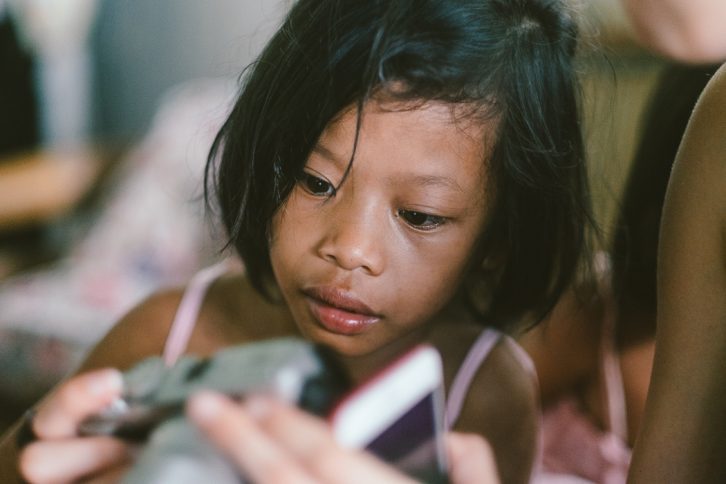
caption
Cassandra Dabuan, 7, plays with a foreign guest’s camera.Dabuan loves the interns because they help with her daughter, Cassandra. Cassandra, 7, is developmentally delayed. Dabuan says the interns pay extra attention to her, helping Cassandra with her schoolwork, learning to walk and even teaching her some French.
If she were outside the farm, the disadvantage of being both female and with a developmental delay would be a heavy burden. According to this 2011 study, the majority of people with disabilities in the Philippines do not finish primary education, with poverty being the most common reason why.
Problems persist
Today, Dabuan’s order is 175 ice lollies. She’s disappointed it’s not more, but says that some of the schools she delivers to anticipate being closed with the coming typhoon and cancelled their orders. She wakes up early to pack the ice lollies into styrofoam coolers covered in a rainbow of electrical tape. She’ll bring the lollies to a school a few kilometres away.
As Dabuan talks popsicle deliveries, her hand moves to her belly. Another delivery awaits her four months down the road. She’s pregnant, again.
“I have five children and soon it will be six. There’s nothing to do in the evening. Making babies and children, it’s a pastime,” she says with a laugh.
“My husband — he is very stone-headed,” says Dabuan. “I told him not to do it inside, but he insists. I told him, ‘not now’ but he didn’t listen. I told him before that if I become pregnant again, I will hang myself in the house.”
Many Filipina women are in the same boat. Eighty per cent of the Philippines is Roman Catholic — the largest Catholic population outside Mexico and Brazil. For years, using contraceptives has been denounced by the church here. Divorce and abortion are illegal. On average, a Filipino woman will give birth to more than three children.
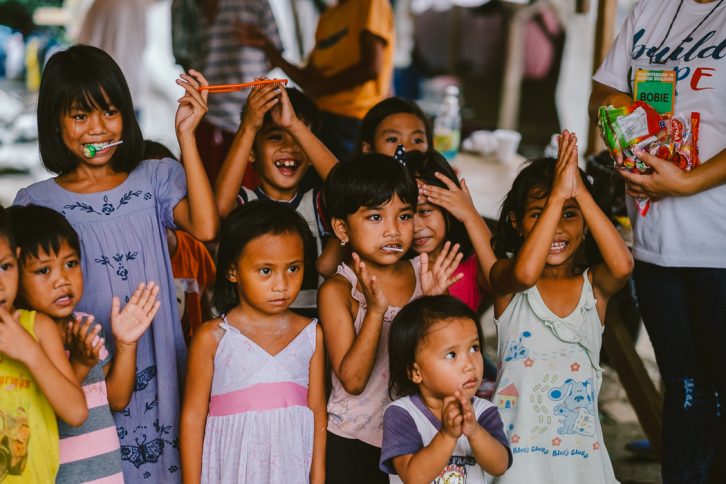
caption
Children play in a Gawad Kalinga village in Quezon City. One-third of the population is less than 15 years old.She will have this baby, but it’s another mouth to feed. Her oldest child is barely a teenager. She says she tried to convince her husband to have a vasectomy, but he didn’t want the procedure, even though the farm would have covered the cost. The alternative for Dabuan is to have her tubes tied, but she shakes her head, “I won’t have surgery.”
There’s also the question of the sustainability for her popsicle business. It works now, but relies on the farm’s infrastructure — the donated ice machine and her partnerships with schools. Dabuan says they’re planning to expand the business to provide flash-freezing for farmers’ crops and fishermen’s catches as well.
The ice popsicle business isn’t the only way she makes money. Some days she’ll also work at the hotel on the property. Locals don’t stay there. It’s expensive and is for visiting tourists or potential investors. It’s on the aptly named California Street, hinting at a Silicon Valley within the jungle.
Staying put
Dabuan doesn’t imagine leaving the farm. Gawad Kalinga houses can’t be sold, only inherited. This way, house recipients aren’t tempted to sell their homes for cash. Although Dabuan has the entrepreneurial skills and English to make it elsewhere, she couldn’t take the donated ice machine with her. The prototype farm also offers an ideal setup: food, education and community. Everyone seems close. No one talks about leaving.
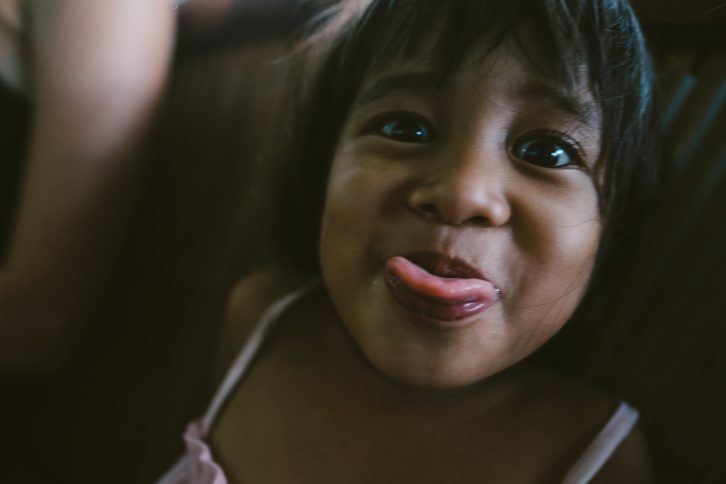
caption
This photo was taken by Elor, Dabuan’s son, of his sister, Rutchell.Dabuan’s two youngest children are eager to take pictures, asking to see a visitor’s camera whenever they get the chance. Dabuan shakes her head, “That’s how they broke all my phones. Always taking pictures.”
After delivering her popsicles, the afternoon is spent around the shop: cleaning, selling ice lollies to locals and farm visitors who drop by her shop. She also freezes ice. She sells it in town and to other farm businesses. She likes being in charge of her own schedule. It means she can take care of her kids and be a mom while also being a businesswoman. Many of the other businesses on the farm are also set up to accommodate motherhood and the importance of spending time with family.
At dusk, Dabuan stacks her ice trays against the wall and heads home for supper, a child on each limb. Now is time for her to be with her family and rest in their home. Tomorrow, there are Swiss tourists visiting and there is more ice to make.
About the author
Mel Hattie
Mel Hattie is a travel journalist from Canada's east coast. She's currently in the MJ New Ventures stream at the University of King's College....

N
Nolda Hattie